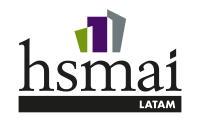We're in budget season, a time to define expectations, allocate resources, and establish the metrics we'll use to measure success. While advanced tools (RMS, artificial intelligence, dashboards) make this work much easier, the foundation of forecasting remains the analysis of historical trends, not wishful thinking or intuition.
In emerging markets like Brazil, which are subject to currency fluctuations, marked seasonality, regional shocks, and volatile economic policies, this principle becomes even more critical.
What is trend analysis?
He trend analysis It is the process of studying historical data—revenue, occupancy, average rates—to identify patterns, shifts, and directions, and from there, project more informed scenarios for the future.
In the past, this was done manually: daily lodging statistics were collected, segmented by day of the week, guest type, or season, and moving averages were calculated to estimate trends. Today, many systems automate this work, but there is a risk of losing the conceptual practice, as the article points out:
“Budgets should not be based on hope, but rather anchored in trends.”
Why insist on this principle, even with advanced technology?
- Avoid unrealistic extrapolations. Setting growth goals without a basis can lead to unattainable or illusory objectives.
- Anticipates breaks in patterns. A slow downward trend may indicate a market change, allowing for adjustments before it's too late.
- Allows for more precise segmentation. Instead of projecting a global number, it can be broken down by segment, day of the week, customer type, or channel, applying differentiated strategies.
- Complements analytical intelligence. Even with sophisticated AI and models, understanding history strengthens the interpretation of automated alerts.
- Improves internal credibility. Budgets that "come out of nowhere" generate skepticism; when supported by visible data, they strengthen team buy-in.
How to apply trend analysis
Practical guide with a strategic approach:
- Choose the appropriate historical horizon. In Brazil, it may make sense to use 5 to 7 years, but adjusting for atypical periods (pandemic, currency crisis).
- Disaggregates by key variables. Analyze occupancy, average rate, REVPAR, customer type, day of the week, and distribution channel (direct/OTA).
- Uses moving averages and smoothing. 3- or 5-point moving average techniques help reduce extreme noise and visualize the real trend.
- Adjusts for external events. If there were major events (World Cups, Olympics, international conferences), treat that year as “off-curve” or adjust proportionally.
- Create scenarios (base, optimistic and conservative). From the trend, model variations (+5 %, –5 %) to manage risks.
- Includes the trend in budget governance. At the meetings of budget, requires that each growth target present its “trend justification” (graph, comparison, adjustment).
- Review and update monthly. Trends are not static; review the data as the year progresses and use a process of forecast rolling.
Forecasting requires data-driven humility
In hospitality, budgeting is a leap of faith, but it must be based on data, not assumptions. Trend analysis offers the perfect balance between art and science.



